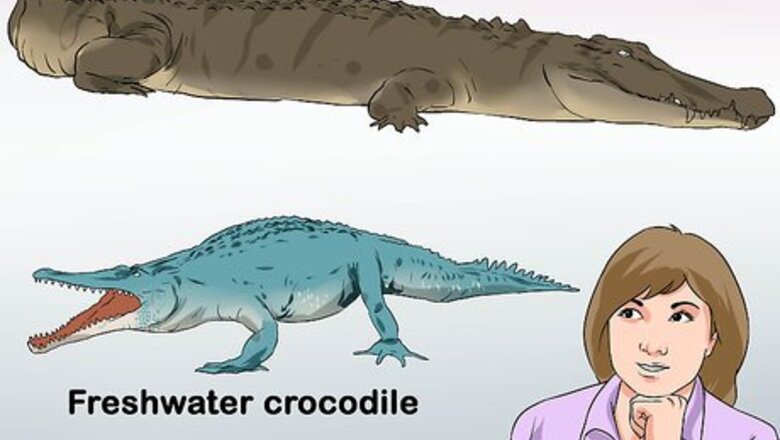
views
X
Research source
If you are traveling to Australia, you should learn how to tell these two species apart based on their physical characteristics, their diet, and their natural habitat. You should also be aware of how to stay safe around both species so you are not at risk of an attack.
Comparing Their Physical Characteristics
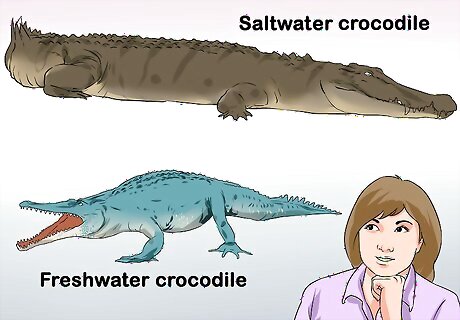
Check how big the crocodile is. One of the major differences between a freshwater crocodile and a saltwater crocodile is size. Freshwater crocodiles are much smaller than saltwater crocodiles, growing to about two meters, with males reaching up to three meters and a maximum weight of 90kg. In contrast, saltwater crocodiles can grow to be as long as six or seven meters and weigh over 1000kg. Saltwater crocodiles as so big they are considered the largest reptiles in the world in terms of mass. They often appear massive in the water and on land, a big size contrast to the smaller freshwater crocodile.
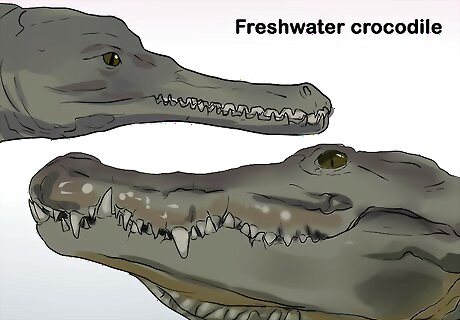
Look at the shape of the crocodile’s head. You should also try to get a closer look at the shape of the crocodile’s head to determine which species it is. Freshwater crocodiles will have longer, thinner snouts, while saltwater crocodiles will have broad, thicker looking snouts. Keep in mind if you believe the crocodile is a saltwater species based on its size, you may not want to get close enough to check the shape of its head. Getting too close to a saltwater crocodile can result in an attack.
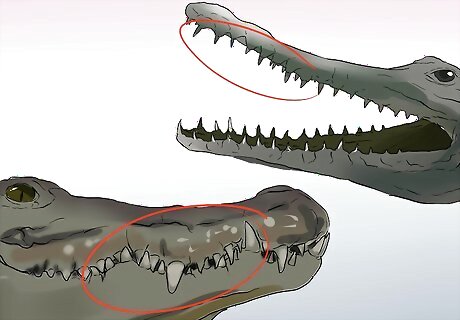
Note the size of the crocodile’s teeth. You can compare the size of the crocodile’s teeth to determine which species it is, as each species has a distinct jawline and teeth size. Freshwater crocodiles have a straight jawline, with teeth that are almost equal in size. In contrast, saltwater crocodiles will have an uneven jawline, with teeth that vary in size. Some of their teeth may be near twice the size of their other teeth. Due to their smaller size, freshwater crocodiles will also have smaller teeth than saltwater crocodiles. Again, if you suspect the crocodile is a saltwater species, you should avoid getting close enough to examine its teeth. You do not want to risk an attack by a saltwater crocodile.
Looking at Their Diet and Habitat

Determine the difference in diet. Saltwater and freshwater crocodiles have different dietary needs, partially because of their size but also because of their different habitats. Saltwater crocodiles, or “salties,” will often eat small reptiles, fish, turtles, and wading birds. However, they are also prone to eating larger prey like wild pigs, buffaloes, and livestock like cattle and horses. Freshwater crocodiles, or “freshies," will eat smaller animals that are found near rivers, such as insects, fish, frogs, turtles, waterbirds, and snakes. Sometimes they will also eat small animals. A big dietary difference is the consumption of people. Saltwater crocodiles have been known to attack and eat humans, while freshwater crocodiles do not usually attack people or eat people.
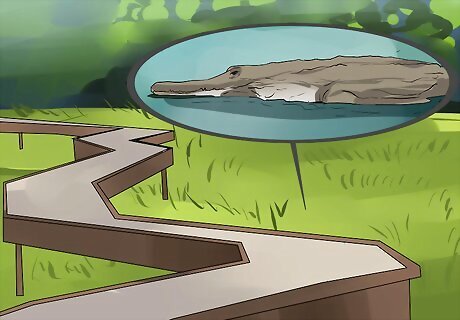
Look for freshwater crocodiles in inland freshwater areas. Freshwater crocodiles are often only found in northern Australia, often in lakes, swamps, billabongs, and the upstream sections of rivers. Though these crocodiles can tolerate saltwater, they are often found in freshwater areas because saltwater crocodiles are not friendly toward freshwater crocodiles. Sometimes, freshwater crocodiles are also found in saltwater areas, but this is rare.
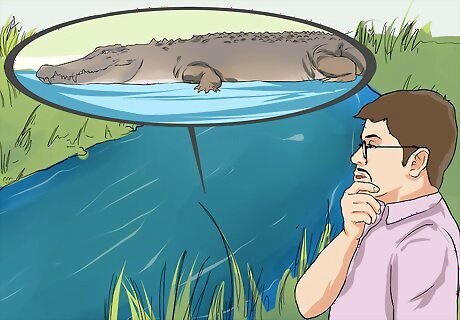
Check for saltwater crocodiles in lagoons, rivers, and swamps. You can find this species in estuaries, rivers, lagoons, and swamps. They are often found in the Australian tropics and along the coastline. You may see saltwater crocodiles on beaches as well as by saltwater rivers and creeks. Many Australian beaches have advisories on saltwater crocodiles, as they can be plentiful along the coast.
Staying Safe Around Both Species
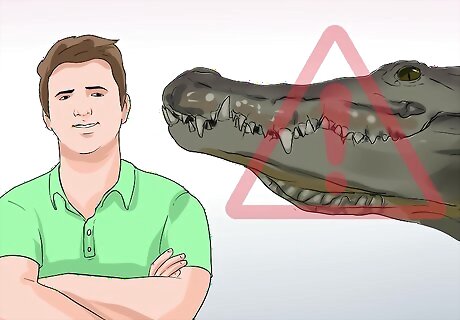
Avoid saltwater crocodiles. Saltwater crocodiles are more territorial and aggressive than freshwater crocodiles. Male salties, in particular, will maintain large territories and react with aggression if you come into their area. In contrast, freshwater crocodiles are known to be less aggressive to people and are not as territorial, though they may attack if they are provoked. You should avoid going near crocodile nests, which are usually by the banks of a river, swamp, or estuary. Female saltwater crocodiles will be very aggressive around their nests. You should avoid swimming in the same waters as saltwater crocodiles due to their territorial nature and keep your distance if you spot a saltwater crocodile on land. The Australian government will usually let travelers know of areas that have a high saltwater crocodile population so it is clear which areas to avoid.
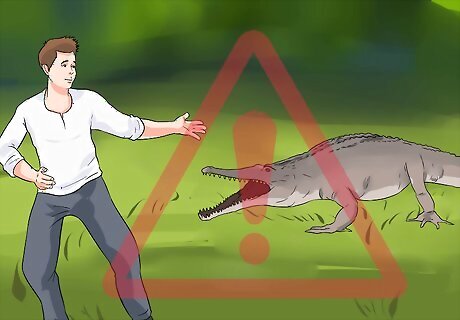
Use caution around freshwater crocodiles. Freshwater crocodiles are not as aggressive as saltwater crocodiles but you should still be careful around them. Do not provoke them by getting too close or getting in their way. Some people actually swim in the same waters as freshwater crocodiles and are not attacked. But you should still exercise caution around freshies. You should avoid going near freshwater crocodiles during July and August, as this is when they breed. Female freshwater crocodiles may be more aggressive and territorial during this time period.
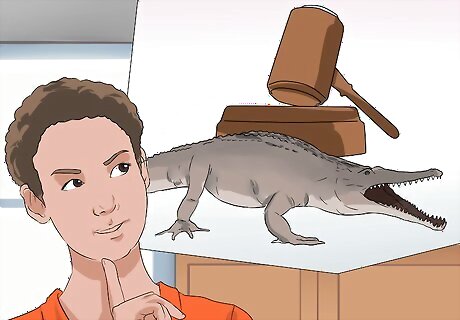
Keep in mind freshwater crocodiles are a protected species. Freshies are a protected species in Australia and there are about 100,000 in the country. Many freshies are in danger of dying out to reduced habitat in Australia. Saltwater crocodiles are also a protected species. They have been the victim of poaching and aggressive trapping which is partly why male saltwater crocodiles are more aggressive in recent years as they fight over territory in the country. Although they are protected, a certain number of animals and eggs are collected each year under permits issued by State and Territory Governments.



















Comments
0 comment